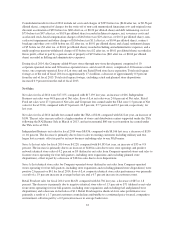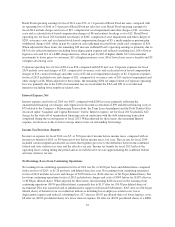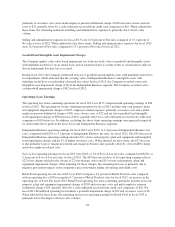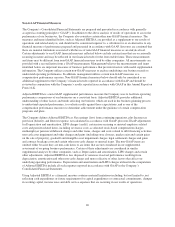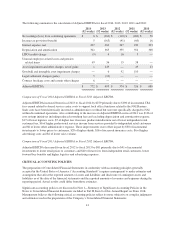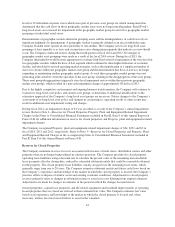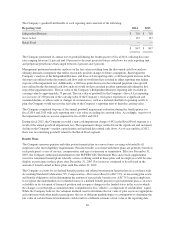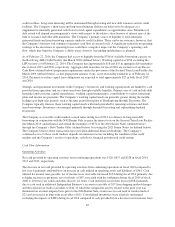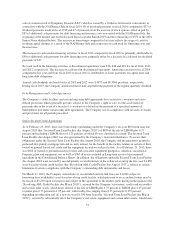Albertsons 2014 Annual Report Download - page 44
Download and view the complete annual report
Please find page 44 of the 2014 Albertsons annual report below. You can navigate through the pages in the report by either clicking on the pages listed below, or by using the keyword search tool below to find specific information within the annual report.Vendor Funds
The Company receives funds from many of the vendors whose products the Company buys for resale in its
stores. These vendor funds are provided to increase the sell-through of the related products. The Company
receives vendor funds for a variety of merchandising activities: placement of the vendors’ products in the
Company’s advertising; display of the vendors’ products in prominent locations in the Company’s stores;
supporting the introduction of new products into the Company’s retail stores and distribution system; exclusivity
rights in certain categories; and to compensate for temporary price reductions offered to customers on products
held for sale at retail stores. The Company also receives vendor funds for buying activities such as volume
commitment rebates, credits for purchasing products in advance of their need and cash discounts for the early
payment of merchandise purchases. The majority of the vendor fund contracts have terms of less than a year,
with a small proportion of the contracts longer than one year.
The Company recognizes vendor funds for merchandising activities as a reduction of Cost of sales when the
related products are sold. Vendor funds that have been earned as a result of completing the required performance
under the terms of the underlying agreements but for which the product has not yet been sold are recognized as
reductions of inventory.
The amount and timing of recognition of vendor funds as well as the amount of vendor funds to be recognized as
a reduction to ending inventory requires management judgment and estimates. Management determines these
amounts based on estimates of current year purchase volume using forecast and historical data and review of
average inventory turnover data. These judgments and estimates impact the Company’s reported gross profit,
operating earnings (loss) and inventory amounts. The historical estimates of the Company have been reliable in
the past, and the Company believes the methodology will continue to be reliable in the future. Based on previous
experience, the Company does not expect significant changes in the level of vendor support. However, if such
changes were to occur, cost of sales and advertising expense could change, depending on the specific vendors
involved. If vendor advertising allowances were substantially reduced or eliminated, the Company would
consider changing the volume, type and frequency of the advertising, which could increase or decrease its
advertising expense. Similarly, the Company is not able to assess the impact of vendor advertising allowances on
increasing revenues as such allowances do not directly generate revenue for the Company’s stores. For fiscal
2014, a 1 percent change in total vendor funds earned, including advertising allowances, with no offsetting
changes to the base price on the products purchased, would impact gross profit by less than 10 basis points.
Inventories, Net
Inventories are valued at the lower of cost or market. Substantially all of the Company’s inventory consists of
finished goods.
The Company uses one of either replacement cost, weighted average cost, or the retail inventory method (“RIM”)
to value discrete inventory items at lower of cost or market before application of any last-in, first-out (“LIFO”)
reserve. As of February 22, 2014 and February 23, 2013, approximately 57 percent and 60 percent, respectively,
of the Company’s inventories were valued under the LIFO method.
As of February 22, 2014 and February 23, 2013, approximately 5 percent of the Company’s inventories were
valued under the replacement cost method before application of any LIFO reserve. The weighted average cost
and RIM methods of inventory valuation together comprised approximately 52 percent and 55 percent of
inventory as of February 22, 2014 and February 23, 2013, respectively, before application of any LIFO reserve.
Under the replacement cost method applied on a LIFO basis, the most recent purchase cost is used to calculate
the current cost of inventory before application of any LIFO reserve. The replacement cost approach results in
inventories valued at the lower of cost or market because of the high inventory turnover and the resulting low
inventory days supply on hand combined with infrequent vendor price changes for these items of inventory.
42


